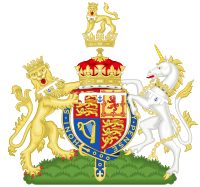Prince Andrew, Duke of York
| Prince Andrew | |
|---|---|
| Duke of York | |
 |
|
| Spouse | Sarah, Duchess of York (m. 1986, div. 1996) |
| Issue | |
| Princess Beatrice of York Princess Eugenie of York |
|
| Full name | |
| Andrew Albert Christian Edward[1] | |
| House | House of Schleswig-Holstein-Sonderburg-Glücksburg |
| Father | Prince Philip, Duke of Edinburgh |
| Mother | Elizabeth II |
| Born | 19 February 1960 Buckingham Palace, London |
The Prince Andrew, Duke of York (Andrew Albert Christian Edward; born 19 February 1960), is the second son and third child of Queen Elizabeth II and Prince Philip, Duke of Edinburgh. At the time of his birth, he was second in the line of succession to the thrones of seven independent states; however, after further births in the Royal Family, and an evolution of the Commonwealth, Andrew is currently fourth in line to the thrones of 16 countries. He is resident in and most directly involved with the United Kingdom, the oldest realm, while also carrying out duties in and on behalf of the other states of which his mother is sovereign.
Known for his military service and participation in the Falklands War, Andrew's marriage to and subsequent divorce from Sarah Ferguson was widely followed by the media. As well as carrying out various royal duties, he currently serves as the United Kingdom's Special Representative for International Trade and Investment.
Contents |
Early life and education
Andrew was born in the Belgian Suite of Buckingham Palace on 19 February 1960, the third child and second son of Queen Elizabeth II and Prince Philip, Duke of Edinburgh, and third grandchild of Queen Elizabeth, The Queen Mother. Baptised in the Palace's Music Room on 8 April 1960, by then Archbishop of Canterbury, Geoffrey Fisher, the Prince's godparents were Prince Henry, Duke of Gloucester; Princess Alexandra of Kent; John Elphinstone, Lord Elphinstone; Hugh FitzRoy, Earl of Euston; and Georgina, Lady Kennard, and he was named after his paternal grandfather, Prince Andrew of Greece and Denmark.
Andrew was the first child born to a reigning British or Commonwealth realms monarch since Queen Victoria's youngest child, Princess Beatrice, was born in 1857. As the child of the sovereign, Andrew was styled from birth as His Royal Highness and held the title The Prince Andrew.
As with his older siblings, a governess was appointed to look after the Prince and was responsible for his early education at Buckingham Palace. Andrew was then sent to Heatherdown Preparatory School before attending, in September 1973, Gordonstoun, in northern Scotland, as his father and elder brother had done before him. While there, Andrew spent six months – from January to June 1977 – participating in an exchange programme to Lakefield College School in Lakefield, Ontario, and graduated in July two years later with A-Levels in English, history, economics, and political science. Andrew eschewed university, however, choosing instead to enter the Britannia Royal Naval College at Dartmouth.
| The Royal Family of the United Kingdom and the other Commonwealth realms |
|---|
 |
|
HM The Queen
|
Military service
It was announced in November 1978 that Andrew would be joining the Royal Navy the following year, and in December he underwent various sporting tests and examinations at the Aircrew Selection Centre, at RAF Biggin Hill, along with further tests and interviews at HMS Daedalus, and interviews at the Admiralty Interview Board, HMS Sultan. Through March and April 1979, the Prince was enrolled at the Royal Naval College Flight, undergoing pilot training, until he was accepted as a trainee helicopter pilot and signed on for 12 years from 11 May 1979. On 1 September of the same year, Andrew was appointed as a Midshipman, and entered Dartmouth. Through 1980 he also took the Royal Marines Green Beret commando course.
After passing out of Dartmouth, the Prince went on to elementary flying training with the Royal Air Force at RAF Leeming, and later, basic flying training with the navy at HMS Seahawk, where he learned to fly the Gazelle helicopter. After being awarded his 'Wings', he moved onto more advanced training on the Sea King helicopter, and conducted operational flying training until 1982, when he joined his first front-line unit, 820 Naval Air Squadron, serving aboard the aircraft carrier, HMS Invincible.
Falklands War
The British overseas territory of the Falkland Islands was invaded by Argentina on 2 April 1982, an event that instigated the Falklands War. Invincible was one of the two operational aircraft carriers available at the time, and, as such, was to play a major role in the Royal Navy taskforce assembled to sail south to retake the islands. However, Prince Andrew's place on board and the possibility of the Queen's son being killed in action made the British Government apprehensive, and the Cabinet desired that Andrew be moved to a desk job for the duration of the conflict. The Queen, though, insisted that her son be allowed to remain with his ship, meaning Andrew remained on board Invincible to serve as a Sea King helicopter co-pilot, flying on missions that included anti-submarine warfare and anti-surface warfare, Exocet missile decoy, casualty evacuation, transport, and search and air rescue, though he was not involved directly in any combat.
At the cessation of the war, Invincible returned to Portsmouth, where the Queen and Prince Philip joined other families of the crew in welcoming the vessel home, after which Prince Andrew laid a wreath at the cenotaph each year on Remembrance Sunday to commemorate the South Atlantic campaign. Though he had brief assignments to HMS Illustrious, RNAS Culdrose, and the Joint Services School of Intelligence, Andrew remained with Invincible until 1983. In Commander Nigel Ward's book, Sea Harrier Over the Falklands, Prince Andrew was described as "an excellent pilot and a very promising officer."
In late 1983, Andrew transferred to RNAS Portland, was trained to fly the Lynx helicopter, and was promoted to the rank of Lieutenant on 1 February 1984, whereupon the Queen appointed him as her personal aide-de-Camp. Andrew then went on to serve aboard HMS Brazen as a flight pilot until 1986, including deployment to the Mediterranean Sea as part of Standing NRF Maritime Group 2, and undertook the Lieutenants' Greenwich Staff Course. On 23 October 1986, the Prince transferred to the General List, enrolled in a four month helicopter warfare instructor's course at RNAS Yeovilton, and, upon graduation, served from February 1987 to April 1988 as a helicopter warfare officer in 702 Naval Air Squadron, RNAS Portland, as well as on HMS Edinburgh as an officer of the watch and assistant navigating officer until 1989, including a six month deployment as part of exercise Outback 88 to the Far East.
Prince Andrew, now the Duke of York, served as flight commander and pilot of the Lynx HAS3 on HMS Campbeltown from 1989 to 1991, during which he also acted as Force Aviation Officer to Standing NRF Maritime Group 1 while the Campbeltown was flagship of the NATO force in the North Atlantic from 1990 to 1991. He then passed the squadron command examination on 16 July 1991, attended the Staff College, Camberley, the following year, and completed the army staff course, becoming a Lieutenant-Commander on 1 February and passing the ship command examination on 12 March 1992. From 1993 to 1994, Andrew commanded the Hunt Class Minehunter HMS Cottesmore.
From 1995 to 1996, the Prince was posted as Senior Pilot of 815 Naval Air Squadron – then the largest flying unit in the Fleet Air Arm – his main role in that position being to supervise flying standards and to guarantee an effective operational capability. He was then made a Commander on 27 April 1999, and went on to finish his naval career at the British Ministry of Defence until 2001, as an officer of the Diplomatic Directorate of the Naval Staff. In July of that year, the Duke of York was released from the Active List of the Navy, and, three years later, was made an Honorary Captain, rather than the substantive rank of Captain, as would be traditional. On 19 February, his 50th birthday, he was promoted to Rear Admiral.
Marriage and divorce
Prince Andrew married Sarah Ferguson at Westminster Abbey on 23 July 1986, the same day the Queen created him Duke of York, Earl of Inverness, and Baron Killyleagh – all titles previously held by both his maternal great-grandfather and grandfather. Andrew had known Ferguson since childhood, and had met each other occasionally at polo matches, and became re-acquainted with one another at Royal Ascot in 1985.
The couple appeared to have a happy marriage, producing two daughters, and presenting a united outward appearance through the late 1980s; the Duchess was seen as refreshing in the context of the royal protocol surrounding the Royal Family. However, the Duke of York's frequent travel due to his military career, as well as relentless, often critical, media attention focused on Sarah, led to fractures in the marriage. On 19 March 1992, the couple announced plans to separate, and did so in an amicable way. Some months later, pictures appeared in the tabloid media of Sarah in intimate association with her financial advisor at the time, John Bryan , which effectively ended any hopes of a reconciliation between the Duke and Duchess. Thereafter, the marriage was ended in divorce on 30 May 1996,[2] though the split was friendly, and the Duke of York spoke fondly of his ex-wife: "We have managed to work together to bring our children up in a way that few others have been able to and I am extremely grateful to be able to do that."[3] It was stipulated that the custody of the two Princesses would be shared between their parents, and the Duchess even continued to live at Andrew's home, Sunninghill Park, until 2004, when he moved to the Royal Lodge. In 2003, Richard Kay, in his first gossip column for the Daily Mail, asserted that the Duke was about to marry the businesswoman Amanda Staveley. She was, however, subsequently quoted in the Sunday Telegraph saying "I will not be marrying Andrew now or in the future." In 2007, Sarah purchased Dolphin House, a mansion directly beside the Royal Lodge. In 2008, a fire at Dolphin House resulted in Sarah moving into the Royal Lodge, again sharing a home with Andrew.
In May 2010, the Duchess of York, the Prince's ex-wife, was filmed by a News of the World reporter claiming that Prince Andrew had agreed that if she were to receive £500,000, he, the Prince, would meet with the donor, and pass on useful top level business contacts. She was filmed receiving, in cash, $40,000 as a downpayment. The Prince's entourage denied he knew of the situation.
Official duties

Currently, the Duke of York works with UK Trade & Investment, part of the Department for Business, Innovation and Skills, as the United Kingdom's Special Representative for International Trade and Investment. It was from Prince Edward, Duke of Kent, that Andrew took over in this role, which involves the Duke representing the UK at various trade fairs and conferences all over the world. Andrew was also a member of the Scout Association.[4]
Prince Andrew also tours Canada to frequently undertake duties related to his military role there. Rick Peters, the former Commanding Officer of the Royal Highland Fusiliers of Canada stated: "[Andrew]'s very well informed on Canadian military methods."[5]
Personal interests
The Duke is also a keen golfer, and plays to a low single-figure handicap standard.[6] He was captain of the Royal and Ancient Golf Club of St. Andrews between 2003 and 2004 – during the club's 250th anniversary season – is patron of a number of royal golf clubs, and is an honorary member of many others. This is not without controversy, and the Duke has been criticised for using the Queen's Flight for transport to various golfing functions. He is a Freeman of the Worshipful Company of Shipwrights. In recent years, he has developed strong links with Kazakhstan and is a regular goose hunting companion of the country's president Nursultan Nazarbayev.[7] He is a supporter of Norwich City football club.[1]
Titles, styles, honours and arms
Titles and styles
| Royal styles of HRH The Duke of York |
|
|---|---|
 |
|
| Reference style | His Royal Highness |
| Spoken style | Your Royal Highness |
| Alternative style | Sir |
- 19 February 1960 – 23 July 1986: His Royal Highness The Prince Andrew
- 23 July 1986 – : His Royal Highness The Duke of York[8]
The Prince's style and title in full: His Royal Highness The Prince Andrew Albert Christian Edward, Duke of York, Earl of Inverness, Baron Killyleagh, Knight Companion of the Most Noble Order of the Garter, Knight Commander of the Royal Victorian Order, Canadian Forces Decoration, Aide-de-Camp to Her Majesty. In May 2007, Andrew was entitled to be called His Grace The Lord High Commissioner to the General Assembly of the Church of Scotland.
- 1981-1984: Sub-Lieutenant, Pilot, 820 NAS on HMS Invincible;
- 1984-1993: Lieutenant, Pilot, 815 NAS on HMS Brazen; Helicopter Warfare Instructor, 702 NAS at RNAS Culdrose; Flight Commander, 829 NAS on HMS Campbeltown
- 1993-1999: Lieutenant-Commander, Captain, HMS Cottesmore; Senior Pilot, 815 NAS at RNAS Portland; Directorate of Naval Operations, British Ministry of Defence
- 1999-2005: Commander, Diplomacy Section of the Naval Staff
- 2005-2010: Honorary Captain
- 2010-: Rear Admiral
Honours
- Orders
 19 December 1979 – 2 June 2003: Commander of the Royal Victorian Order (CVO)
19 December 1979 – 2 June 2003: Commander of the Royal Victorian Order (CVO)
- 2 June 2003 – : Knight Commander of the Royal Victorian Order (KCVO)[9]
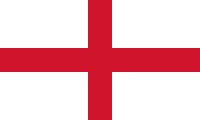 23 April 2006 – : Royal Knight of the Most Noble Order of the Garter (KG)
23 April 2006 – : Royal Knight of the Most Noble Order of the Garter (KG)
- Decorations
 Canadian Forces Decoration (CD)
Canadian Forces Decoration (CD)
- Medals
 6 February 1977: Queen Elizabeth II Silver Jubilee Medal
6 February 1977: Queen Elizabeth II Silver Jubilee Medal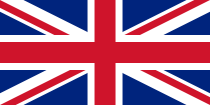 1982: South Atlantic Medal, with rosette
1982: South Atlantic Medal, with rosette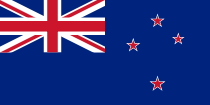 1990: 1990 Commemoration Medal
1990: 1990 Commemoration Medal 6 February 2002: Queen Elizabeth II Golden Jubilee Medal
6 February 2002: Queen Elizabeth II Golden Jubilee Medal 2005: Commemorative Medal for the Centennial of Saskatchewan[10]
2005: Commemorative Medal for the Centennial of Saskatchewan[10]
Honorary military appointments
 1 February 1984 – : Personal Aide-de-Camp to Her Majesty The Queen (AdC(P))
1 February 1984 – : Personal Aide-de-Camp to Her Majesty The Queen (AdC(P))
 Canada
Canada
 Colonel-in-Chief of the Queen's York Rangers (1st American Regiment)
Colonel-in-Chief of the Queen's York Rangers (1st American Regiment) Colonel-in-Chief of the Royal Highland Fusiliers of Canada
Colonel-in-Chief of the Royal Highland Fusiliers of Canada Colonel-in-Chief of the Princess Louise Fusiliers
Colonel-in-Chief of the Princess Louise Fusiliers Colonel-in-Chief of the Canadian Airborne Regiment (disbanded)
Colonel-in-Chief of the Canadian Airborne Regiment (disbanded)
 New Zealand
New Zealand
 Colonel-in-Chief of the Royal New Zealand Army Logistic Regiment
Colonel-in-Chief of the Royal New Zealand Army Logistic Regiment
 United Kingdom
United Kingdom
 Colonel-in-Chief of the 9th/12th Royal Lancers (Prince of Wales's)
Colonel-in-Chief of the 9th/12th Royal Lancers (Prince of Wales's) Colonel-in-Chief of the Royal Irish Regiment (27th (Inniskilling) 83rd and 87th and Ulster Defence Regiment)
Colonel-in-Chief of the Royal Irish Regiment (27th (Inniskilling) 83rd and 87th and Ulster Defence Regiment) Colonel-in-Chief of the Small Arms School Corps
Colonel-in-Chief of the Small Arms School Corps Colonel-in-Chief of the Yorkshire Regiment (14th/15th, 19th and 33rd/76th Foot)
Colonel-in-Chief of the Yorkshire Regiment (14th/15th, 19th and 33rd/76th Foot) Royal Colonel of the Royal Highland Fusiliers, 2nd Battalion Royal Regiment of Scotland
Royal Colonel of the Royal Highland Fusiliers, 2nd Battalion Royal Regiment of Scotland Honorary Air Commodore of the Royal Air Force Lossiemouth.
Honorary Air Commodore of the Royal Air Force Lossiemouth.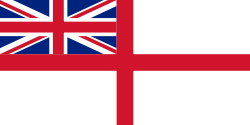 Commodore-in-Chief of the Fleet Air Arm
Commodore-in-Chief of the Fleet Air Arm Admiral of the Sea Cadet Corps
Admiral of the Sea Cadet Corps
Arms
|
||||||||||||||||||||||
Ancestry
| Ancestors of Prince Andrew, Duke of York | ||||||||||||||||||||||||||||||||||||||||||||||||||||||||||||||||||||||||||||||||||||||||||||||||||||||||||||||||||||||||||||||||||||||||||||||||||||||||||||||||||||||||||||||||||||||||||||||||||||||||||||||||||||||||||||||||||||||||||||||||||||||||||||||||||||||||||||||||||||||||||||||||||||||||||||||||||||||||||||||||||||||||||||||||||||||||||||||||||||||||||||||||||||||||||||||||||||||||||||||||||||||||||||||||||||||||||||||||||||||||||||||||||||||||||||||||||||||||||||||||||||||||||||||||||||||||||||||||||||||||||||||||||||||||||||||||||
|---|---|---|---|---|---|---|---|---|---|---|---|---|---|---|---|---|---|---|---|---|---|---|---|---|---|---|---|---|---|---|---|---|---|---|---|---|---|---|---|---|---|---|---|---|---|---|---|---|---|---|---|---|---|---|---|---|---|---|---|---|---|---|---|---|---|---|---|---|---|---|---|---|---|---|---|---|---|---|---|---|---|---|---|---|---|---|---|---|---|---|---|---|---|---|---|---|---|---|---|---|---|---|---|---|---|---|---|---|---|---|---|---|---|---|---|---|---|---|---|---|---|---|---|---|---|---|---|---|---|---|---|---|---|---|---|---|---|---|---|---|---|---|---|---|---|---|---|---|---|---|---|---|---|---|---|---|---|---|---|---|---|---|---|---|---|---|---|---|---|---|---|---|---|---|---|---|---|---|---|---|---|---|---|---|---|---|---|---|---|---|---|---|---|---|---|---|---|---|---|---|---|---|---|---|---|---|---|---|---|---|---|---|---|---|---|---|---|---|---|---|---|---|---|---|---|---|---|---|---|---|---|---|---|---|---|---|---|---|---|---|---|---|---|---|---|---|---|---|---|---|---|---|---|---|---|---|---|---|---|---|---|---|---|---|---|---|---|---|---|---|---|---|---|---|---|---|---|---|---|---|---|---|---|---|---|---|---|---|---|---|---|---|---|---|---|---|---|---|---|---|---|---|---|---|---|---|---|---|---|---|---|---|---|---|---|---|---|---|---|---|---|---|---|---|---|---|---|---|---|---|---|---|---|---|---|---|---|---|---|---|---|---|---|---|---|---|---|---|---|---|---|---|---|---|---|---|---|---|---|---|---|---|---|---|---|---|---|---|---|---|---|---|---|---|---|---|---|---|---|---|---|---|---|---|---|---|---|---|---|---|---|---|---|---|---|---|---|---|---|---|---|---|---|---|---|---|---|---|---|---|---|---|---|---|---|---|---|---|---|---|---|---|---|---|---|---|---|---|---|---|---|---|---|---|---|---|---|---|---|---|---|---|---|---|---|---|---|---|---|---|---|---|---|---|---|---|---|---|---|---|---|---|---|---|---|---|---|---|---|---|---|---|---|---|---|---|---|---|---|---|---|---|---|---|---|---|---|---|---|---|---|---|---|---|---|---|---|---|---|---|---|---|---|---|---|---|---|---|---|---|---|---|---|---|---|---|---|---|---|---|---|---|---|---|---|---|---|---|---|---|---|---|---|---|---|---|---|---|---|---|---|---|---|---|---|---|
|
||||||||||||||||||||||||||||||||||||||||||||||||||||||||||||||||||||||||||||||||||||||||||||||||||||||||||||||||||||||||||||||||||||||||||||||||||||||||||||||||||||||||||||||||||||||||||||||||||||||||||||||||||||||||||||||||||||||||||||||||||||||||||||||||||||||||||||||||||||||||||||||||||||||||||||||||||||||||||||||||||||||||||||||||||||||||||||||||||||||||||||||||||||||||||||||||||||||||||||||||||||||||||||||||||||||||||||||||||||||||||||||||||||||||||||||||||||||||||||||||||||||||||||||||||||||||||||||||||||||||||||||||||||||||||||||||||
Issue
| Name | Birth | Marriage | Issue | |
|---|---|---|---|---|
| Princess Beatrice of York | 8 August 1988 | Single | ||
| Princess Eugenie of York | 23 March 1990 | Single | ||
External links
- The Duke of York's official website
- Royal.gov.uk- The Duke of York
- Prince Andrew, Duke of York at the Internet Movie Database
References
- ↑ The 1960 Order-in-Council giving the surname Mountbatten-Windsor to the male-line descendants of the Duke of Edinburgh and Elizabeth II specifically refers only to such descendants without a royal title, as those with it generally have no need for a surname. Despite this, the Duke of York (like his sister) entered with this surname in the marriage register.
- ↑ "thePeerage.com > Andrew Albert Christian Edward Windsor, 1st Duke of York". thePeerage.com. http://www.thepeerage.com/p10071.htm#i100707. Retrieved 2008-10-25.
- ↑ Castle, Stephen (4 February), "From Prince Andrew, critical words for U.S. on Iraq", Herald Tribune, http://www.iht.com/articles/2008/02/04/america/andrew.php
- ↑ "Royal Support for the Scouting and Guiding Movements". Official Website of the British Monarchy. http://www.royal.gov.uk/output/Page5951.asp. Retrieved 2008-07-25.
- ↑ Hurst, Jeff; Cambridge Times: Princely plans for Andrew; 1 May 2007
- ↑ Royal, by Robert Lacey, 2002.
- ↑ Foggo, Daniel (27 July), "Prince Andrew, his £15m home and the Kazakhstan connection", The Times, http://www.timesonline.co.uk/tol/news/uk/article4407240.ece
- ↑ LondonGazette, issue 50606, supplement 1, issued 23 July 1986
- ↑ "St George's Chapel > History > Orders of Chivalry". St George's Chapel. http://www.stgeorges-windsor.org/history/hist_chivalry.asp. Retrieved 2008-10-27.
- ↑ Jackson, Michael. "Honours of the Crown". Monarchist League of Canada. http://www.monarchist.ca/new/docs/honours.html. Retrieved 2008-10-25.
- ↑ "Marks of cadency in the British Royal Family". Heraldica. http://www.heraldica.org/topics/britain/cadency.htm. Retrieved 2008-10-25.
|
Prince Andrew, Duke of York
Cadet branch of the House of Schleswig-Holstein-Sonderburg-Glücksburg
Born: 19 February 1960 |
||
| British royalty | ||
|---|---|---|
| Preceded by Prince Henry of Wales |
Line of succession to the British Throne 4th position |
Succeeded by Princess Beatrice of York |
| Line of succession to the Dukedom of Edinburgh 4th position |
Succeeded by The Earl of Wessex |
|
| Peerage of the United Kingdom | ||
| New creation | Duke of York 8th creation 23 July 1986 – present |
Incumbent |
| Order of precedence in England and Wales and in Northern Ireland | ||
| Preceded by The Prince of Wales |
Gentlemen HRH The Duke of York |
Succeeded by The Earl of Wessex |
| Preceded by Prince William of Wales |
Gentlemen in current practice |
|
| Order of precedence in Scotland | ||
| Preceded by The Duke of Rothesay |
Gentlemen HRH The Duke of York |
Succeeded by The Earl of Wessex |
| Preceded by Prince William of Wales |
Gentlemen in current practice |
|
|
||||||||||||||
|
||||||||||||||||||||||||||||||||||||||
|
|||||
|
||||||||||||||
|
|||||||||||||||||
